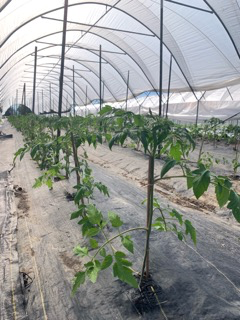
Maggie Flanagan | News and Sports Editor | mflanagan6@mail.smcvt.edu
The past two summers Vermont farmers have seen record-breaking floods. According to the Vermont Agency of Agriculture’s July 2024 Flood Loss and Damage Survey, Chittenden county had an estimated total of $2,147,780 in losses. Statewide losses came to more than $5 million across 3,516 acres.
According to the survey more than 60% of farmers didn’t have crop or livestock insurance. In 2023, damages were reported in every county, with estimated total losses of $16,063,054.
More than 27,000 acres were impacted, with the average respondent having 103 impacted acres and $61,000 in damages, said the Vermont Agency of Agriculture’s July 2023 Flood Loss and Damage Survey.
St. Michael’s College teaching farm was able to survive the devastating floods because of its location and proximity to the floodplain, said Kristyn Achilich, the director of the Leahy Institute for the Environment and director of the Farm and Food program.
Christine Gall is the assistant director of the Leahy Institute for the Environment and program manager for Farm and Food.
Gall said that the farm has sandy loam soils that drain really quickly, so they don’t experience standing water. “The past two summers, we have irrigated nearly every single day of the summer to keep up, because that soil drains so fast.”
On farms down the road, experiencing three floods in a single calendar year, those folks are really struggling, said Gall.
“They’re not able to irrigate every day because they’re experiencing flooding. That soil down there is holding on to water.”

St. Michael’s College student farmers weeding and harvesting at Common Roots Farm in South Burlington.
During the past two summers Farm and Food program students visited a number of local farms, focusing on post-flood work relief.
Some students helped at the Intervale Center, a nonprofit organization in Burlington, Vermont, others worked closer to campus at small farms like Common Roots.
Common Roots is an organic farm in South Burlington. Liz Spitler, the director of marketing and community, said, “The last two years have been an exercise of community and bringing together various farms that suffered.”
With standing water all over the farm, St. Michael’s College students weeded and helped with the harvesting at Common Roots said Gall. “It created crusted soils that they couldn’t till through or plow through, and then couldn’t plant.”
“A lot of our root vegetables, as well as cucumbers, never came up because the ground was too saturated,” said Spitler. “They were completely drowned out.”
“If flood water touches a crop, it’s not considered food safe anymore, so it just has to be pulled and tossed,” said Gall.
During the summer of 2023, St. Michael’s College farm students spent two hours pulling out around $20,000 worth of cherry tomatoes at the People’s farm on the Intervale, said Gall.
“They’re in a flood plain,” said Gall. “Flood plains are supposed to function as the sort of catchment when the river does overflow.
“The benefit to farming in a floodplain is that when the river does overflow, it deposits a ton of nutrients. However, they used to be 500-year floods, then 100-year floods, and now we’ve had three massive flooding events inside one calendar year.”
“I’ve noted that these storms seem to be that much more frequent and certainly more severe in their impacts,” said Spitler. “I really feel that the people who suffered the most are the farmers as well as the people living in low lying areas.”
Spitler said in her five years at Common Roots, they have adapted as climate change has lengthened their growing season. For example, they built a larger hoop house so that they could grow food longer and shift crop varieties, said Spitler.
“We are able to grow later into the season,” said Spitler.

“Part of it is because of the larger capacity, but we also had weather that was far warmer in October.”
“I will say for this past year we did have a better yield,” said Spitler. “I think because of preparations and recognition of what was going on with climate change, we were able to mitigate a lot of the problems.
“I also think that this past summer, as much as we did get flooded early on, we did have a reasonably good rest of the summer.”
At St. Michael’s College, Gall emphasized how upfront they are with students about the protective bubble they farm in.
“We have a lot of safety nets afforded for us, that if you are an independent enterprise, you don’t necessarily have,” said Gall.
“Other farmers are on the land, you know, 24/7,” said Achilich.
“We had to really prioritize the site selection when we started the program.”
“The farm has become really resilient, and it started with the most perfect foundation that we could have for a teaching farm,” said Achilich. “It doesn’t mean it’s easy, but it is a privileged setting.”

